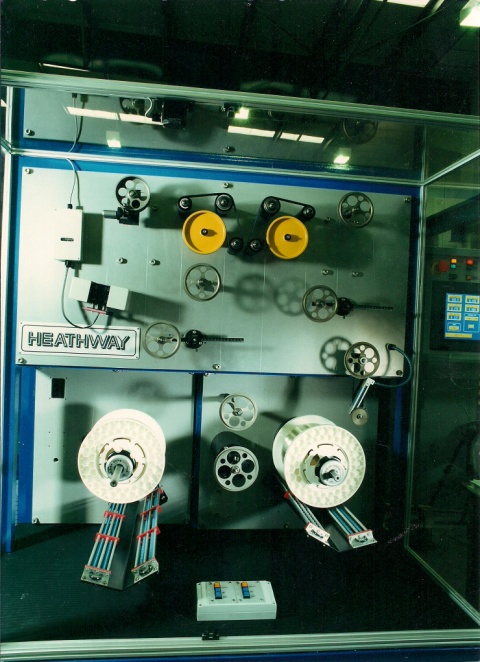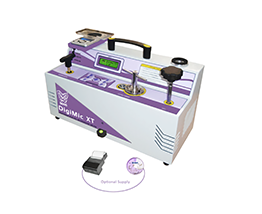Ways robotic vision can minimize errors and streamline quality control
Checking out the Impact of Robotic Vision on Modern Production Techniques and High Quality Control
Robotic vision modern technology is changing the landscape of modern production and quality assurance. By incorporating advanced imaging systems and expert system, manufacturers can achieve unprecedented levels of accuracy and performance. This change not only maximizes manufacturing processes but likewise addresses crucial challenges in maintaining product standards. As industries significantly rely upon these developments, the implications for future manufacturing practices continue to be to be fully discovered. What will this imply for the affordable characteristics of the marketplace?
Comprehending Robotic Vision Technology
Robotic vision technology functions as the backbone of automation in modern production. It encompasses the usage of cameras, sensors, and synthetic intelligence to enable robots to translate and respond to aesthetic information from their setting. This technology allows robotics to identify, find, and review objects, making them with the ability of performing complicated jobs such as assembly, evaluation, and product handling with precision. The combination of artificial intelligence formulas even more boosts the ability of robot vision systems, permitting them to adapt to varying problems and enhance in time. By refining pictures and information in real-time, robotic vision systems can facilitate faster decision-making and decrease mistakes in producing procedures (fibre testing equipment). This technology not just improves functional effectiveness yet additionally assures that high quality criteria are satisfied continually. As the manufacturing landscape remains to advance, understanding the intricacies of robot vision technology ends up being vital for leveraging its potential completely
Advantages of Robotic Vision in Production
Robotic vision technology supplies substantial advantages in production by enhancing precision and accuracy in jobs such as top quality control and assembly. This increased degree of detail warranties that products satisfy strict standards, lowering waste and revamp. Furthermore, the assimilation of robot vision can lead to increased production performance, allowing suppliers to maximize their processes and accomplish higher result prices.
Enhanced Precision and Accuracy
In modern production, improved precision and accuracy are important for optimizing manufacturing procedures and guaranteeing item high quality. Robotic vision systems allow makers to perform complex jobs with exceptional uniformity. These systems make use of innovative imaging modern technologies to identify minute details and variants in materials, components, and completed products. By examining aesthetic data in real-time, robot vision significantly decreases human error, resulting in fewer problems and better requirements. Furthermore, boosted accuracy in measurements and positioning facilitates much better positioning in assembly processes, which is crucial for elaborate styles. Inevitably, the integration of robotic vision not only boosts the dependability of manufacturing outputs but additionally fosters self-confidence amongst customers pertaining to item integrity and performance. This accuracy is important in sectors where top quality is paramount.
Boosted Manufacturing Performance

Producers are significantly turning to vision systems to enhance production performance throughout numerous procedures. These advanced systems enable real-time evaluation and surveillance, significantly minimizing downtime triggered by errors or flaws. By integrating robotic vision, companies can automate quality assurance, enabling for faster recognition of problems and lessening the requirement for human intervention. This results in streamlined process, as robotics can promptly adjust to changes in production demands without sacrificing precision. Vision systems promote much better supply administration by precisely tracking components and products, guaranteeing suitable resource utilization. Eventually, the adoption of robot vision not only improves efficiency however additionally contributes to higher result rates, reduced operational costs, and boosted overall productivity in the manufacturing field.
Enhancing Quality Assurance Processes
Robotic vision technology substantially boosts high quality control processes in production by utilizing precision examination techniques. These advanced systems promote real-time flaw detection, guaranteeing that items satisfy strict high quality requirements. Therefore, suppliers can minimize waste and boost general efficiency.
Precision Inspection Techniques
Precision assessment techniques have actually transformed quality control processes in production, allowing the detection of minute flaws that traditional approaches might ignore. These methods leverage advanced imaging innovations, such as high-resolution cams and laser scanning, to achieve exceptional precision. By using robot vision systems, suppliers can automate evaluation jobs, making certain constant performance and lowering human mistake. The assimilation of artificial intelligence formulas in addition boosts these systems, enabling them to adapt and improve with time. In addition, precision examination helps with the identification of subtle variations in product measurements and surface coatings, which can considerably influence overall item quality. As a result, producers can apply rehabilitative actions much more quickly, inevitably resulting in minimized waste and enhanced customer complete satisfaction.
Real-Time Problem Detection
Harnessing advanced imaging innovations, real-time issue discovery transforms high quality control processes in production. By integrating high-resolution video cameras and innovative formulas, producers can quickly identify anomalies throughout manufacturing. This innovation assists in immediate rehabilitative activities, decreasing waste and boosting overall performance. Real-time systems examine products as they move along the production line, making sure that defects are found and addressed right away production routines. On top of that, the implementation of artificial intelligence improves the accuracy of these systems, permitting them to adapt to new issue patterns gradually. Consequently, suppliers take advantage of improved item quality and reduced functional expenses. Inevitably, real-time defect detection not just simplifies procedures however also fosters a culture of constant enhancement in modern-day manufacturing environments.
Real-Time Information Analysis and Choice Making
In the dynamic landscape of production, real-time information evaluation empowers systems to make swift, notified choices. By leveraging advanced robotic vision technologies, makers can gather and refine huge quantities of information instantly. These systems analyze aesthetic inputs to keep an eye on production procedures, guaranteeing that any type of deviations from high quality criteria are detected and dealt with quickly. Manufacturers can optimize operations by reallocating resources and changing operations based on real-time understandings.
The assimilation of data analytics enables for anticipating upkeep, where possible tools failings continue reading this are expected before they interfere with manufacturing. This aggressive approach lessens downtime and improves overall performance. fibre testing equipment. The capacity to make data-driven decisions in actual time considerably lowers waste and boosts product high quality, enabling manufacturers to react to market needs promptly. As an outcome, real-time data evaluation not just simplifies manufacturing however likewise fosters a society of continual improvement in contemporary production atmospheres
Difficulties in Implementing Robotic Vision Equipments
Carrying out robot vision systems in making provides a range of difficulties that can hinder their efficiency. One substantial challenge is the complexity of integrating these systems with existing equipment and workflows. Makers often encounter compatibility problems with legacy devices, leading to boosted expenses and downtime. Furthermore, the irregularity in item forms, dimensions, and materials can complicate the calibration of vision systems, demanding extensive training and fine-tuning.
Another challenge hinges on refining huge quantities of aesthetic information in genuine time. High-performance computer sources are important, which may call for additional investment in facilities. Additionally, there is a lack of skilled employees capable of taking care of and maintaining these sophisticated systems, leading to possible functional inadequacies. Ultimately, ensuring the integrity and precision of robot vision systems under varying environmental problems postures a continuous obstacle. Addressing these issues is vital for making best use of the potential advantages of robotic vision in production.
Future Fads in Robotic Vision for Manufacturing
As improvements in expert system and artificial intelligence continue to advance, the future of robotic vision in production shows up progressively encouraging. Arising trends suggest a shift in the direction of more innovative imaging technologies, such as 3D vision systems and hyperspectral imaging, which will improve accuracy in quality assurance procedures. Combination with the Web of Points (IoT) will make it possible for real-time information evaluation, permitting robotic systems to adjust quickly to modifications in the production setting. Furthermore, the growth of joint robotics (cobots) outfitted with sophisticated vision capabilities is expected to help with smooth human-robot communications, boosting performance and security on the manufacturing facility flooring. In addition, the incorporation of edge computer will certainly encourage robotic vision systems to process information in your area, reducing latency and enabling faster decision-making. These advancements will not only improve manufacturing processes but additionally substantially boost product high quality, placing robot vision as a keystone of future commercial procedures.
Often Asked Questions
Just How Much Does Robotic Vision Innovation Generally Cost?
Robotic vision innovation normally costs between $10,000 and $100,000, depending upon the intricacy and specs. Factors influencing price consist of sensor top quality, software capabilities, and combination demands, making it necessary to analyze certain task requirements.
What Industries Are The Majority Of Influenced by Robotic Vision Innovations?
Robotic vision advancements read this article substantially effect sectors such as production, auto, electronics, and food handling - optical measurement system. These sectors take advantage of enhanced automation, enhanced quality assurance, and enhanced performance, leading to structured procedures and minimized labor expenses
Can Robotic Vision Solutions Be Integrated With Existing Machinery?
Robotic vision systems can without a doubt be incorporated with existing machinery. This combination boosts operational efficiency, enabling suppliers to leverage progressed innovations without the demand for full overhauls, consequently maximizing production processes and keeping top quality requirements.

What Skills Are Called For to Run Robotic Vision Systems?
Operating robotic vision systems demands proficiency in programs, an understanding of artificial intelligence, understanding of picture processing strategies, and the capacity to repair hardware and software concerns, making sure seamless assimilation and optimal efficiency within making environments.
Are There Any Kind Of Security Worry About Robotic Vision in Manufacturing?
